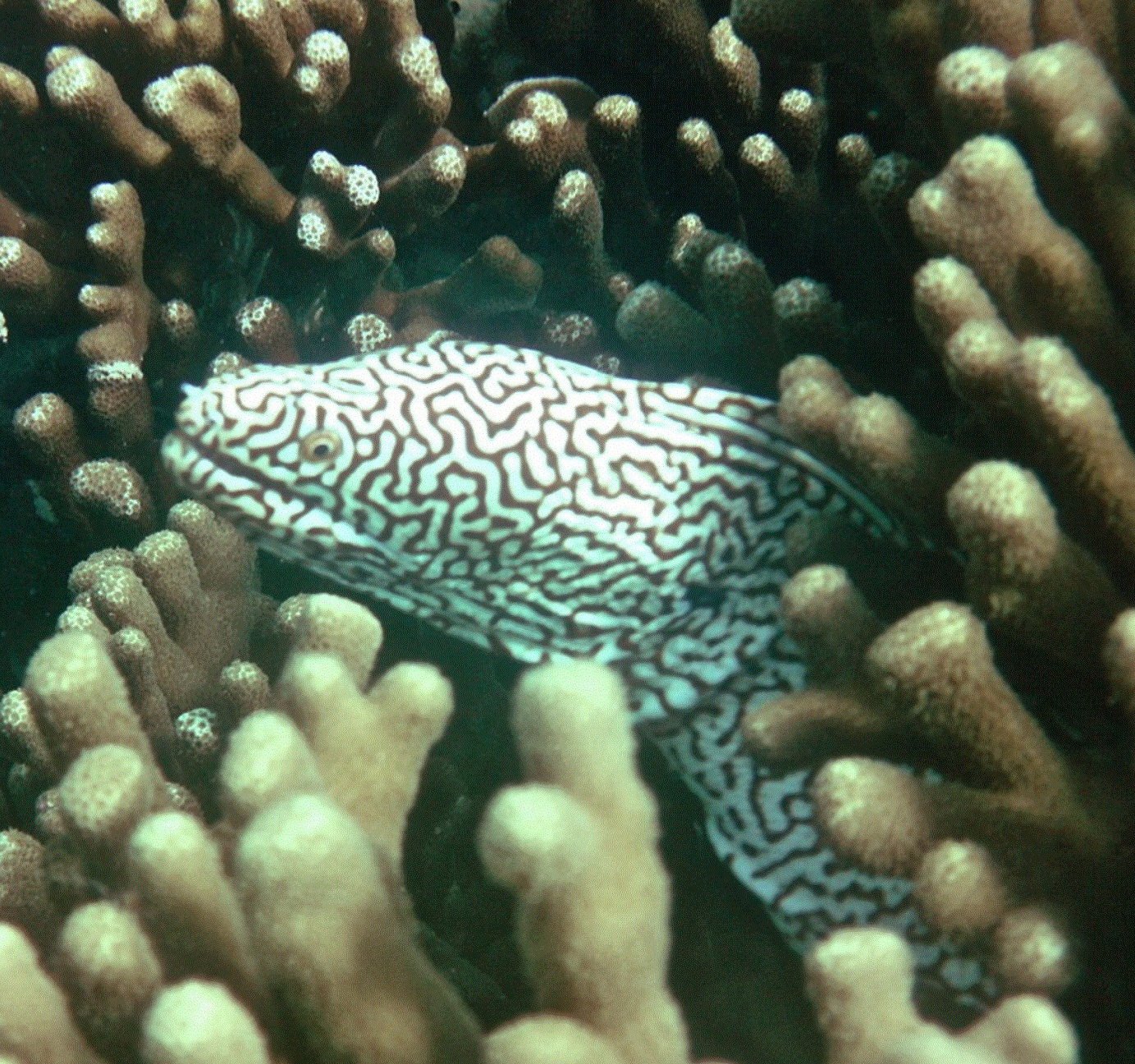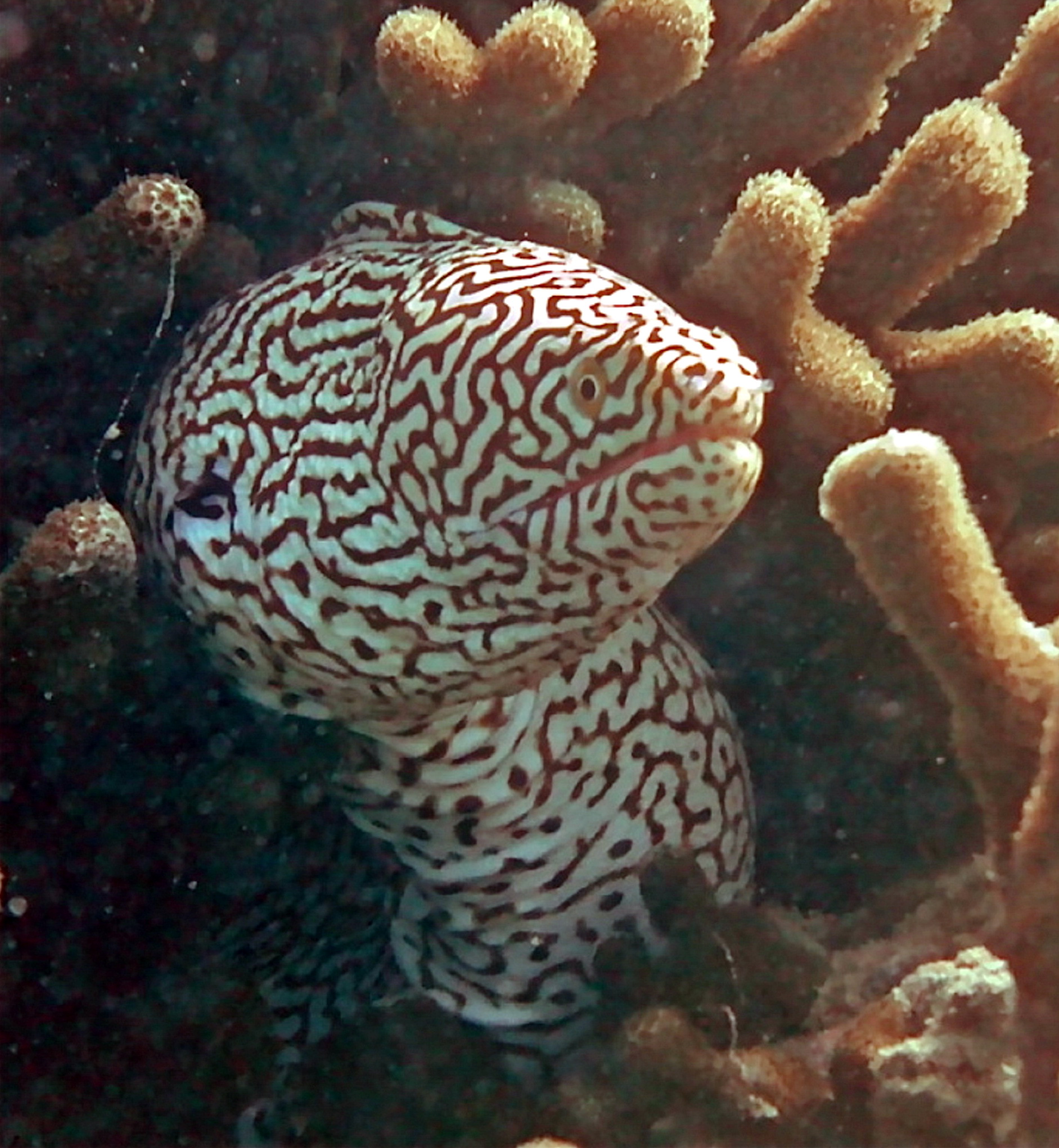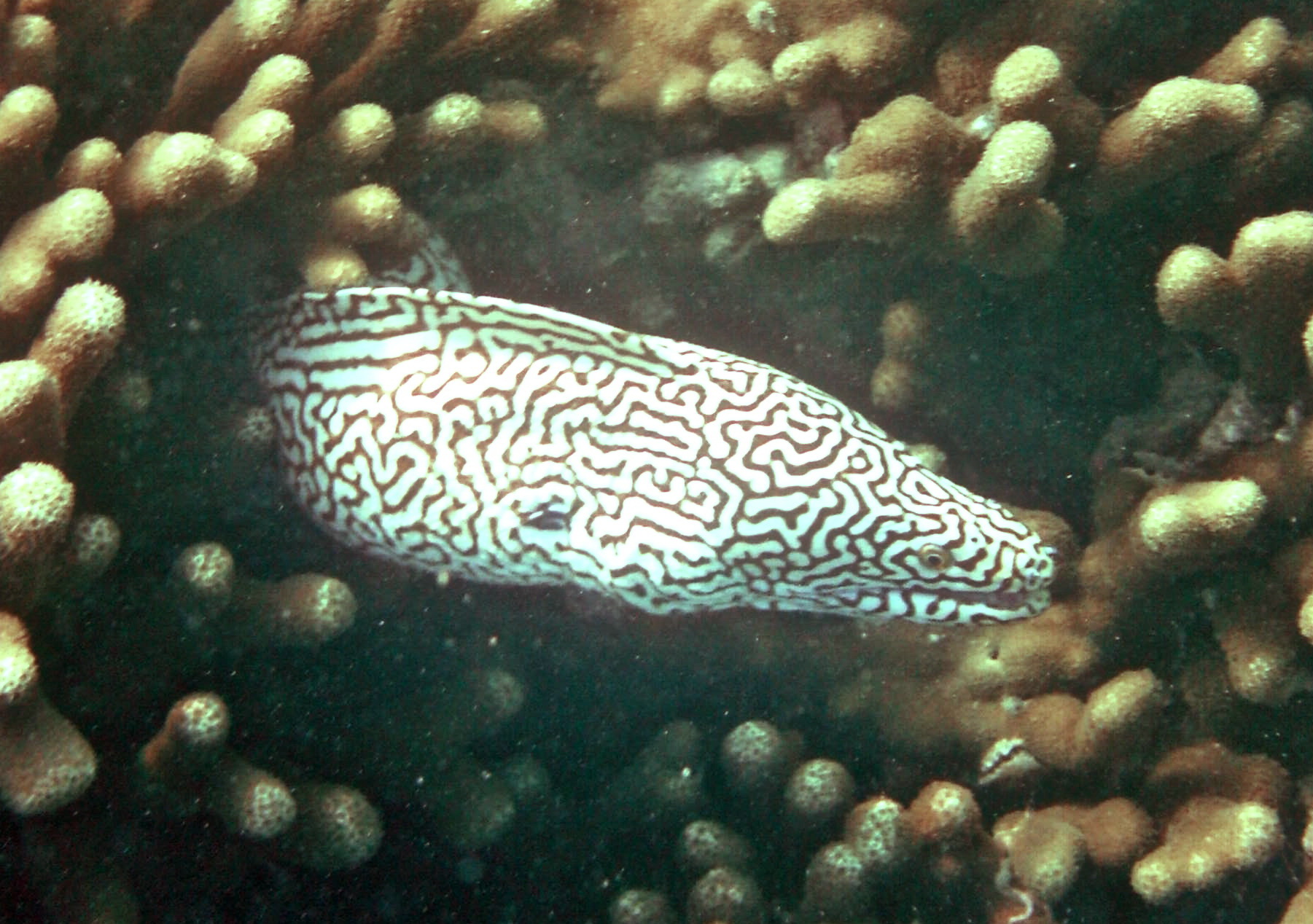Published in the Ocean Watch column, Honolulu Star-Advertiser © Susan Scott
April 9, 2012
While snorkeling off the Kaneohe Bay sandbar, reader Shannon Garcia took several photos of a striking moray eel. When she got home and couldn’t find the species in books or online, Shannon asked me via email whether she could send the picture for identification.
Sure, I wrote back. Even though I was sailing in Mexico and didn’t have my Hawaii fish books or Internet access, I thought odds were good that I would recognize a fish from Kaneohe.
 Courtesy Shannon Garcia
Courtesy Shannon Garcia
A color variant of the whitemouth moray eel,
Gymnothorax meleagris, in Kaneohe Bay.
I did not. Nor could I even venture a guess.
When I got home and still couldn’t identify this moray, I emailed the picture to John Hoover, author of “The Ultimate Guide to Hawaii Fishes, Sea Turtles, Dolphins Whales and Seals.”
John wrote back, “It’s a color variant of Gymnothorax meleagris, the common whitemouth moray,” and guided me to a photo on Page 106 of his book.
Sure enough, there was a picture similar to Shannon’s eel, plus another color variation of the whitemouth, one of the most commonly seen morays in Hawaii.
Such differences within a species is called polymorphism, a Greek term meaning many forms. The varying individuals within a species are often called morphs. Shannon’s eel, therefore, is a morph of the whitemouth.

To see what most whitemouth morays look like, check out Keoki and Yuko Stender’s page of photos at goo.gl/VA1gQ. There the eels’ colors and spot sizes vary somewhat, but not nearly as much as morphs.
Why is a morph a morph and not a subspecies or a race? Good question. The naming and sorting of plants and animals according to their relationships is a science called taxonomy. Given the nature of evolution, taxonomic lines often blur.
It’s this unpredictability, though, that makes biology so much fun because you never know what you’re going to see. One rule I learned early in my marine biology life is to never tell an observer that they could not have seen what they think they saw. In this marvelous world of genetic diversity, almost anything is possible.
In general a subspecies has enough differences from its species that taxonomists give it a third scientific name. A race is the same species with color or shape variations. Usually, a race is concentrated in a particular region. As are morphs.
Then there are breeds, strains, tribes and stocks. All of these divisions are efforts to make sense of the breathtaking variation of life on our planet.
Shannon isn’t the only one to have photographed whitemouth moray morphs. Once I knew the scientific name, I found that John had posted a discussion online, with pictures, of other forms of this eel. See goo.gl/5tyG0.
Thank you, Shannon, for sharing your morph. Its beauty is, well, beyond compare.
